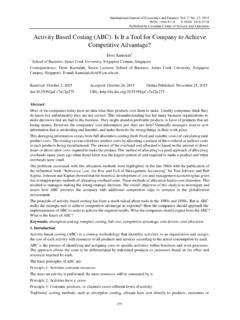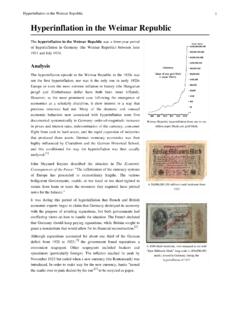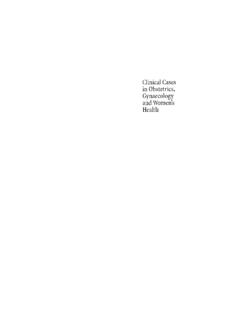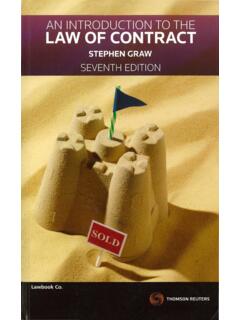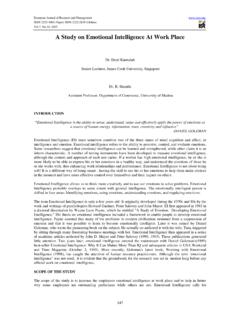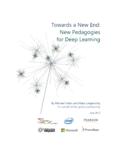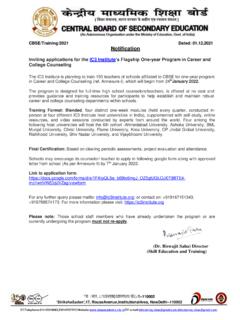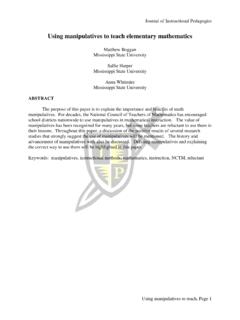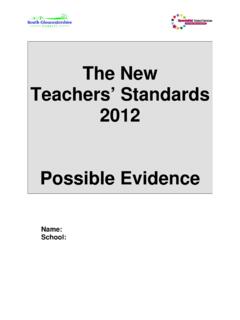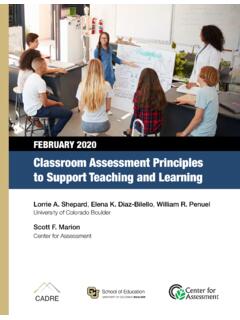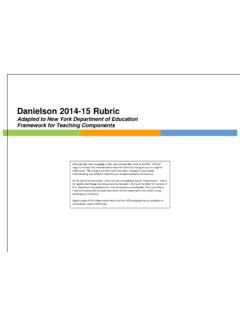Transcription of Yunkaporta, Tyson (2009) Aboriginal pedagogies at the ...
1 This file is part of the following reference: yunkaporta , Tyson ( 2009 ) Aboriginal pedagogies at the cultural interface. PhD thesis, James Cook University Access to this file is available from: Tyson Kaawoppa yunkaporta Department of Education and Training, New South Wales Our Ways of Learning in Aboriginal Languages Abstract Aboriginal culture has not been lost -just disrupted. Our ways of knowing, being, doing, valuing and learning remain in an ancestral framework of knowledge that is still strong. Through Indigenous research in western New South Wales exploring these knowledge systems in land, language, people and the relationships between them, eight ways of learning have been identified. This chapter makes recommendations for using the eight ways in the teaching of Aboriginal languages in schools. Tracking the Pedagogy in our Language There is deep knowledge in our languages.
2 There is a spirit of learning in our words. This is more than just knowledge of what to learn, but knowledge of how we learn it. This is our pedagogy, our way of learning. We find it in language words about thinking and communicating. We find it in language structure, in the way things are repeated and come around in a circle, showing us how we think and use information. The patterns in stories, phrases, songs, kinship and even in the land can show us the spirit of learning that lives in our cultures. If your language has just one word for speak, tell, say and talk, then it is telling you something about the role of speech in learning -particularly if that same word carries the negative meaning of forcing somebody to do something against their will. You will go softly with the way you instruct, keeping in mind that the word for thinking and knowing in that language is also the word for loving.
3 The language itself is giving you a picture of how to approach language education in your place. It might be telling you to give students a healthy balance of supportive discipline and independence. This is strong pedagogy. It is true that all Aboriginal languages are different and carry their own ways and values, but we also have many things in common. That Aboriginal idea of balance between social support and self-direction is one of them. To use the Aboriginal concept of balance -if that is a part of our way, then it makes sense for us to find what pedagogy we have in common with non- Aboriginal ways too, balancing the two worlds. If we find the overlap between our best ways of learning and the mainstream's best ways of learning then we will have an equal balance. From our language and our land knowledge we know there are always connections between all things, places where different elements are no longer separate but mix together and become something else.
4 This way of working gives us new innovations as well as bringing us together. There are eight ways of learning that have been found at this interface of two worlds. This chapter not only shows those eight ways but also follows them in the way it is written. First we see how each of the eight ways came out of a research project and then we see how to use the eight ways in your Aboriginal language classroom. /' \ The Story Story takes you up, then down, leaving you in a place that is higher than before. It runs through everything in land, body, mind and spirit, tying together the shape of learning for all peoples. So this narrative about a western New South Wales (NSW) research project continues through these next eight sections, tying all of the elements together. The eight ways came from Indigenous research, which is research done by and for Aboriginal people within Aboriginal communities, drawing on knowledge and protocol from communities, Elders, land, language, ancestors and spirit.
5 These things formed the methodology - the ways and rules for working in research. As the research took place across Western NSW and the researcher was a man with kinship ties in the far north and ancestral ties in the far south of Australia, that methodology had to work in the middle ground between different Aboriginal nations. It also had to work in the middle ground between Aboriginal knowledge systems and western learning systems. Re-Awakening Languages Messages from land and spirit gave shape to the metilodology, the way of working. Work was done witil river junctions and interconnecting songlines that brought together different cultural knowledges. The work of Indigenous researchers who had gone before was also followed, bringing to the centre tile idea of the Cultural Il1teiface of Dr Martin Nakata from tile Torres Strait, the idea of a dynamic overlap of knowledges from different peoples.
6 This idea of the interface was found not only in research literature, but in Indigenous law and story from all around Australia and the world. The Map Following the model of a local river junction, the Aboriginal researcher and a local Ngemba mentor worked witil non- Aboriginal education experts at a place between Bourke and Brewarrina where three rivers meet to become one. This river gave the shape for a map of the project, a way to bring togetiler the ways of learning from different cultures and find what they had in common, tilen follow those common ways. The interface between tillee A boriginal and western learning frameworks was found and the eight ways were born from tiut, carrying the best of both worlds down tile river. Figure 1 The map The Silence In our world the deepest knowledge is not in words. It is in tile meaning behind tile words, in tile spaces between them, in gestures or looks, in meaningful silences, in tile work of hands, in learning from journeys, in quiet reflection, in Dreaming.
7 The eight ways were tested on journeys following the river along a codfish song line linking to the Murray River, tested in ceremony, tested in tile carving and use of tools to represent them. TIlls silent knowledge was explored with the hands and the feet. A lot of tllls knowledge can't be shown with words in a book like tllls -but in our way it would be up to the Aboriginal listener (in tllls case reader) to fill in those gaps themselves, to f1ll it with their own cultural knowledge and teaclling experience. 2 Short Paper Title The Signs That same silent knowledge was also explored with the eyes, through the signs and images we all see -our way of visualising and sharing ideas that has been with us forever, the things that make up our mental landscape. These were not only signs from the land and animals, but also signs made by people.
8 This became a way of finding, working with and sharing the eight ways through images. The images of tlle eight ways were brought together in one picture tllat was modelled on a kinship system to show they are not steps to follow, but dynamic and interactive processes. Story Sharing Learningl Maps Non-verbal Symbols & Images The Land Figure 2: The Eight Ways as Symbols Community Links Land Links Deconstruct Reconstruct Non-Linear Entities in the land like stones, animals, plants and rivers all provided knowledge through the research to uncover and to share the eight ways. The languages and stories of tlle land were a part of tllls too. For example language and Dreaming stories from one language group showed that learning, thinking and all otller journeys take a winding path, that tllere are no straight lines to knowledge or outcomes. TIllS knowledge was tracked further into tlle land, walking and talking with local people down winding rivers and in the winding tracks of blue-tongue lizards.
9 TIllS winding patll became tlle symbol for one of the eight ways and provided a map for dUnking about and working with the other seven ways. The Shape The winding path provided a shape for dUnking outside of the straight line, that Western linear logic. But there were other shapes as well, particularly circular ways of dUnking found in kinship systems, land knowledge, art and 3 Re-Awakening Languages language structures. There was also a two-way shape, a balance and symmetry where opposites meet. That way of thinking brought home the Cultural Interface, allowing an understanding of the shapes of logic from different cultural viewpoints. For example it became clear that not all western thinking was in a straight line. It was also non-linear, in the way they think about cycles in science and in their recent tradition of lateral thinking that zig-zags in a similar way to the winding path mentioned above.
10 All eight ways came to be developed in this way, finding the best ways of thinking in common across cultures, coming from two sides and meeting in the middle. The Back-tracking One shape that came from the best thinking in both ways was from the idea of back-tracking through knowledge, a process with a shape like two funnels coming together at a centre point. In this way of learning you always give a model of the end product of any learning right at the start. This model can then be broken down into increasingly smaller parts then put back together - deconstructed and reconstructed. At the same time, each piece must be seen as part of the whole, and as part of a purposeful activity in the real world. This way was seen in the mainstream practice of scaffolded literacy as well as in the Aboriginal learning of traditional cultural practices. This was used in the research to help develop the eight ways by examining other models and research projects done by Indigenous people from around the world.


